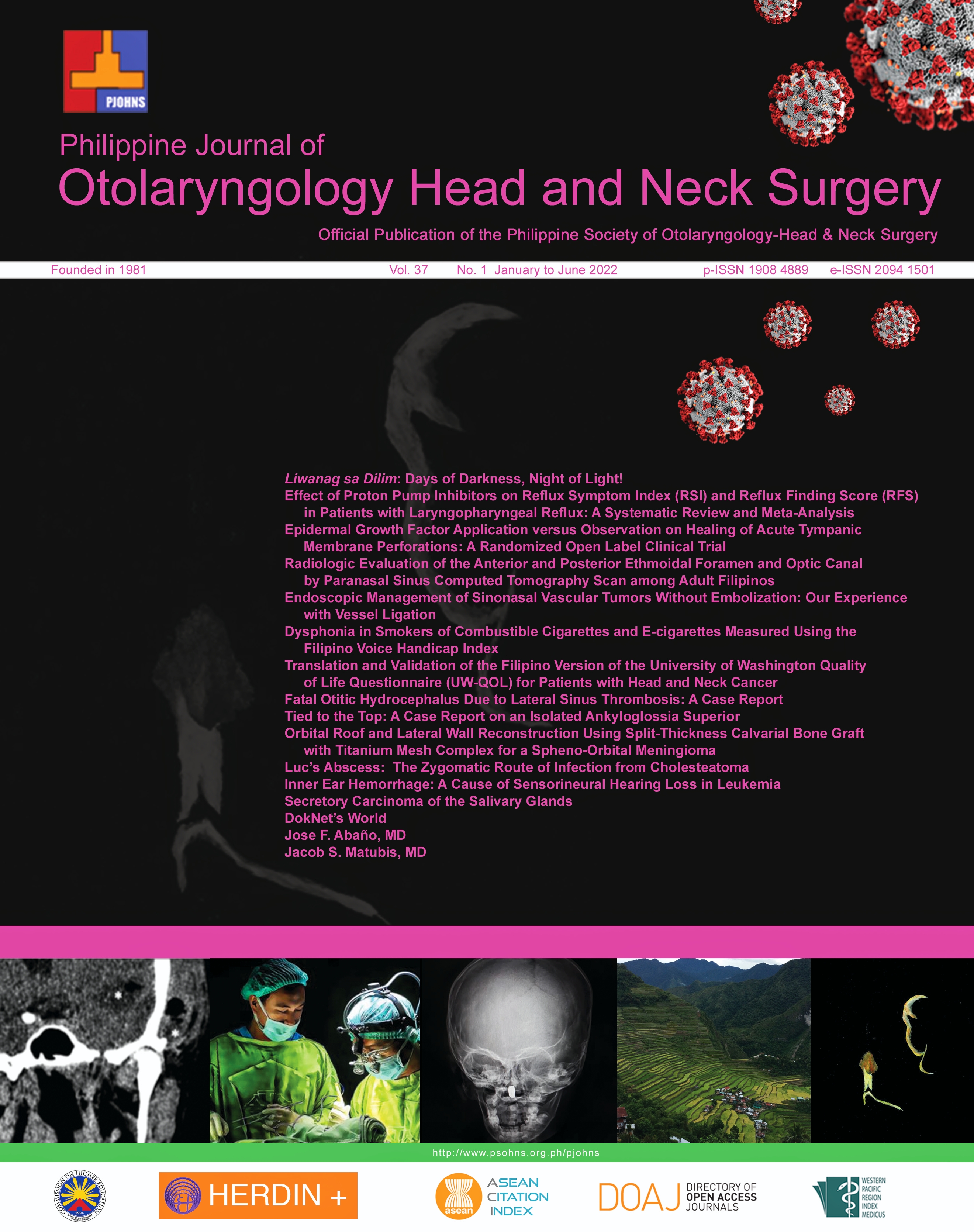Dysphonia in Smokers of Combustible Cigarettes and E-cigarettes Measured Using the Filipino Voice Handicap Index
DOI:
https://doi.org/10.32412/pjohns.v37i1.1721Keywords:
Dysphonia, Smoking, Vaping, E-cigarette, Cigarette, Voice HandicapAbstract
ABSTRACT
Objectives: To determine the prevalence of dysphonia, defined as any perceived voice pathology, in conventional cigarette smokers and e-cigarette users and to quantify and compare the Filipino Voice Handicap Index (VHI) scores of the two groups based on the mean scores for each of the three domains of this tool, as well as the mean total score for each group.
Methods:
Design: Cross-sectional study
Setting: Tertiary National University Hospital
Participants: 52 adults between the ages 18-65 with no previously known laryngeal illness or condition were divided into 26 conventional smokers and 26 e-cigarette users and completed the self-administered Filipino Voice Handicap Index.
Results: The prevalence of impairment in the sample using a total VHI score cut-off of 18 was 17.31% (9 out of 52, CI 8.23-30.32%) and the prevalence of dysphonic symptoms in the sample was 86.54% (45 out of 52, CI 74.21-94.41%). There were no significant differences between smokers and e-cigarette users for impairment using this cut-off (z: -1.36, p: .07) and dysphonic symptoms (z: 0.4063, p: .68). The prevalence of moderate impairment was 3.85% (1 out of 26, CI: 0.10-19.64%) among those using e-cigarettes; and 1.92% (1 out of 52, CI: 0.04-10.26%) among the entire sample population.
Conclusion: There appears to be no statistically significant difference between the Filipino VHI scores of conventional smokers and e-cigarette users. Further inquiry into the subject would benefit from a larger sample size, comparison with a control group, inclusion of other factors relevant to the development of dysphonia, and correlation with objective means for voice analysis.
Downloads
Published
How to Cite
Issue
Section
License
Copyright (c) 2022 Publisher

This work is licensed under a Creative Commons Attribution-NonCommercial-NoDerivatives 4.0 International License.
Copyright transfer (all authors; where the work is not protected by a copyright act e.g. US federal employment at the time of manuscript preparation, and there is no copyright of which ownership can be transferred, a separate statement is hereby submitted by each concerned author). In consideration of the action taken by the Philippine Journal of Otolaryngology Head and Neck Surgery in reviewing and editing this manuscript, I hereby assign, transfer and convey all rights, title and interest in the work, including copyright ownership, to the Philippine Society of Otolaryngology Head and Neck Surgery, Inc. (PSOHNS) in the event that this work is published by the PSOHNS. In making this assignment of ownership, I understand that all accepted manuscripts become the permanent property of the PSOHNS and may not be published elsewhere without written permission from the PSOHNS unless shared under the terms of a Creative Commons Attribution-NonCommercial-NoDerivatives 4.0 International (CC BY-NC-ND 4.0) license.



